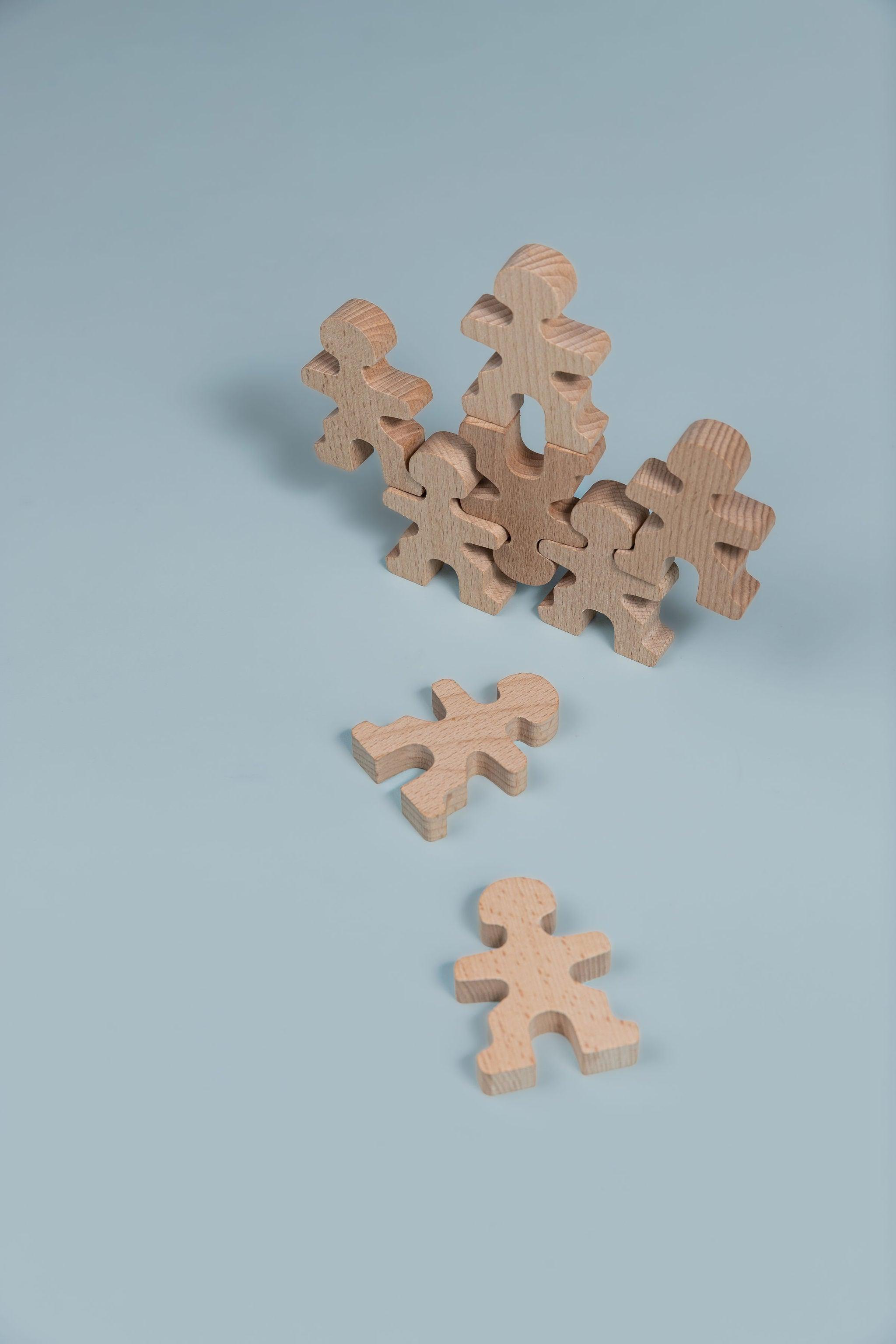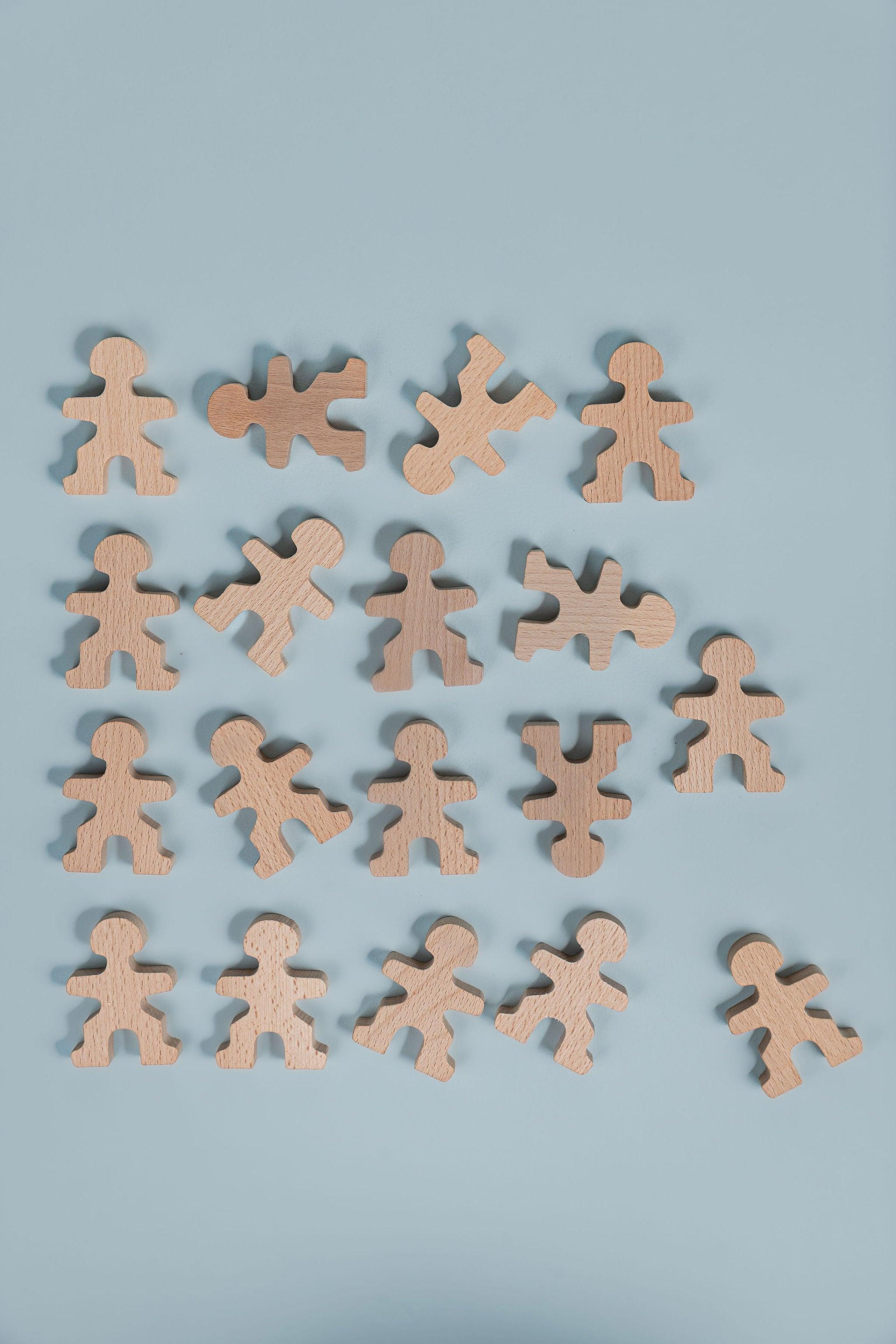Balancing People
Balancing People is the kind of toy that looks simple but offers endless layers of learning. Children can stack them high, balance them in different ways, or watch them topple over — and every attempt builds problem-solving, patience, and creativity. More than just play, this open-ended set encourages early math concepts, geometry, cause-and-effect, and fine motor skill development in the most hands-on way.
What’s Included
-
16 x stacking men
-
1 x drawstring bag for easy storage
What Our OT Says:
Although this set is often used as a balance activity, I love adding the mini figurines to a small world play box, it’s incredible value because it extends play in so many directions. Small world play is more than imagination; it’s how children make sense of the world around them.
When children use these wooden men as characters, they step into different roles, practice empathy, and learn to see situations from someone else’s perspective. They often act out conflicts between the figures, which gives them a safe space to experiment with problem-solving and emotional regulation.
Storytelling naturally flows into this type of play. Kids create backstories, invent dialogue, and build little adventures, all of which strengthens language, narrative skills, and communication. Sometimes they even project their own feelings onto the figures, which is a gentle way of exploring identity, self-reflection, and coping strategies.
And when children play together, the social benefits multiply. They negotiate roles, take turns, and collaborate on building stories or balancing towers. That combination of creativity, empathy, and teamwork is why I see these figurines as so much more than just a balance toy, they’re a tool for emotional growth, resilience, and connection.





















